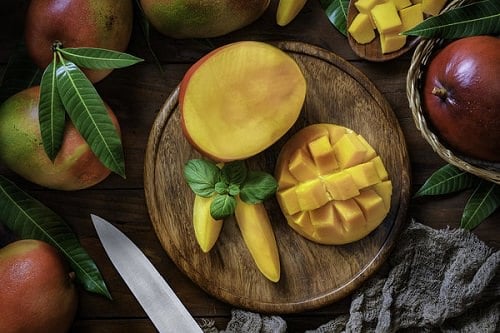Is Mango a Citrus Fruit or Stone Fruit? What exactly the king of fruits is? Puzzled? Here’s an article to clear all your confusion!
Mango is a tropical fruit, belonging to the genus Mangifera. It is native to the Southern part of Asia, especially eastern India, Burma, and the Andaman Islands. The fruit comes in a variety of shapes, sizes, textures, and tastes. Its little tart, fragrant, sweet, and pulpy flavor makes it famous all over the world. So, what mango is? Is Mango a Citrus Fruit or Stone Fruit? Let’s find out!
Check out our article on growing Mango tree here
Difference Between Citrus Fruit and Stone Fruit?

Citrus fruits contain a lot of citric acid and are mostly available around the year. They’re a distinguished source of vitamin C. They include fruits like lemon, grapefruit, and orange.
On the other hand, stone fruits, also known as drupe because they have a ‘stone’ enclosed in the fleshy area, and a seed inside that stone. The fruit mostly develops from flowers. It comprises fruits like coconut, plum, and apricot.
Is Mango a Citrus Fruit?
Just like mangoes, citrus fruits grow in a warm climate. Mango can grow in the tropical as well as the subtropical regions. Citrus fruit belongs to the Rutaceae family, whereas, the mango belongs to the Anacardiaceae family. Due to which, mango has sweet or sour flesh and smooth peel. Consequently, mango does not come under the category of citrus fruit.
Is Mango a Stone Fruit?
Benefits of Mangoes

- Mangoes are a great source of vitamin A, therefore, they are beneficial for the eyes.
- Even its pit and skin can cure indigestion and asthma.
- Antioxidants in mango are useful for anticancer medicines.
- Fiber present in it is remedial for cholesterol.
- In addition to this, the bark and leaves of the mango tree also carry medicinal properties.
Culinary Uses
Mango is also called ‘king of fruits’ for its amazing taste and highly versatile food products. It is consumed raw as well as ripe. Raw mango tastes sour while ripe ones are generally sweet. The famous pickle in India is made from raw mangoes. There are many mango-flavored products, including drinks, ice cream, cake, sorbet, cocktails. It is also preserved as pickle, sweet-pickle, chutney, and dried form.


